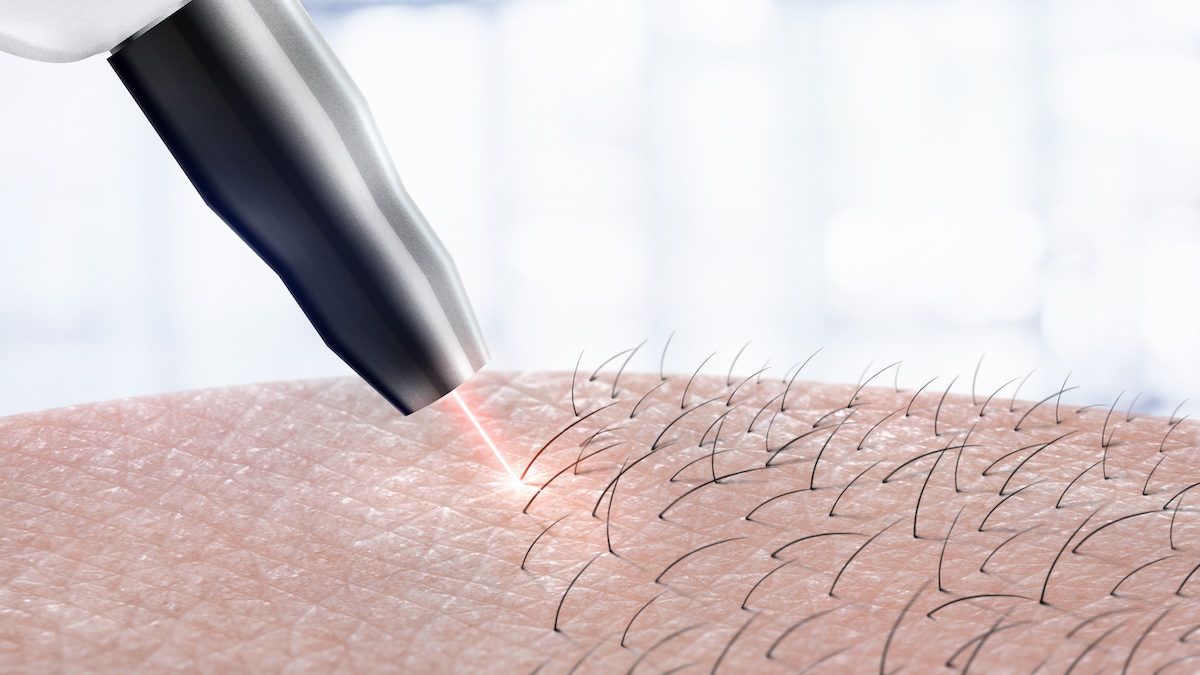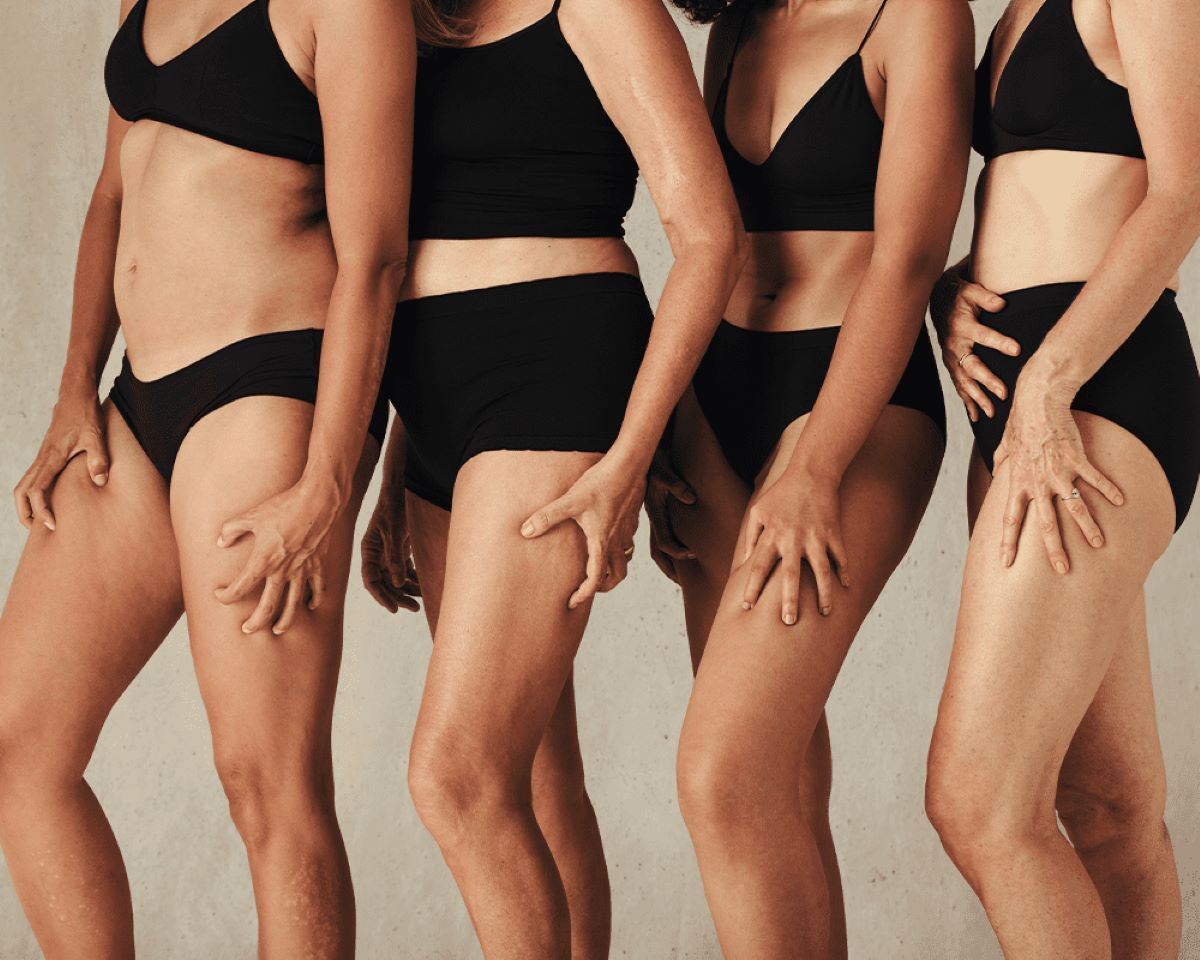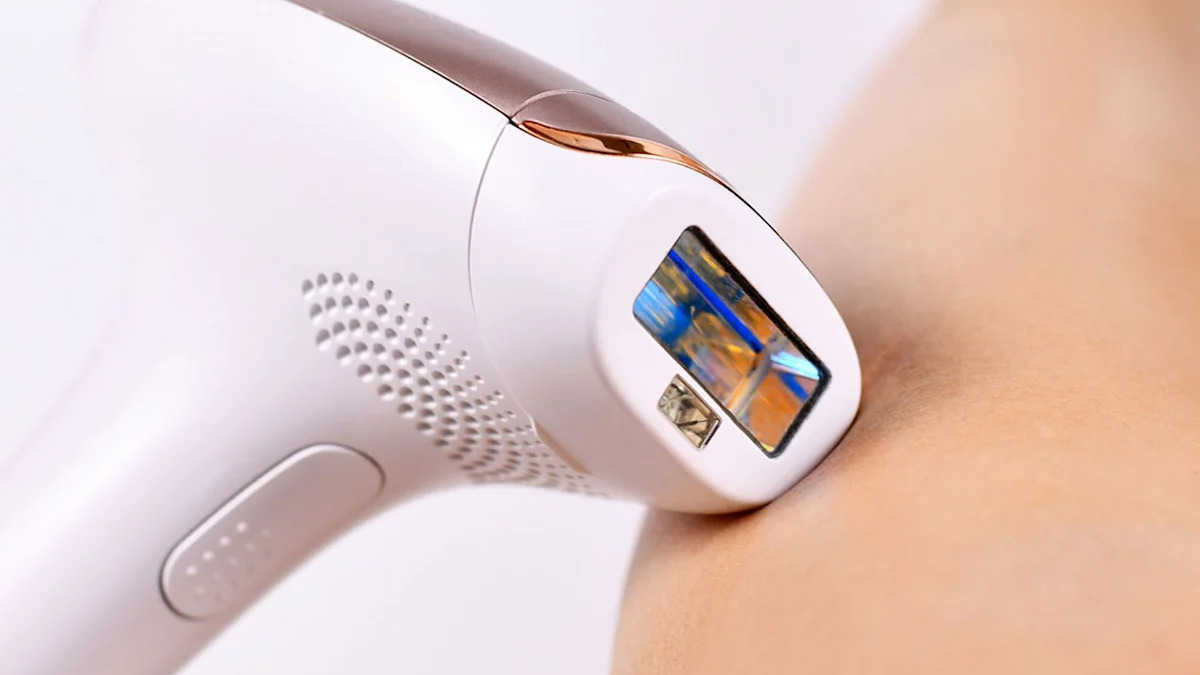

FAQs
How Long Does Laser Hair Removal Take
Modified: August 5, 2023
Discover the answers to your general questions about laser hair removal, including how long the treatment typically takes. Achieve smooth, hair-free skin with this popular procedure.
(Many of the links in this article redirect to a specific reviewed product. Your purchase of these products through affiliate links helps to generate commission for Under-tec.com, at no extra cost. Learn more)
Table of Contents
Introduction
Welcome to the ultimate guide on laser hair removal! If you’re tired of the constant battle with unwanted body hair, then laser hair removal could be the solution you’ve been looking for. This revolutionary method offers a more permanent and effective solution for hair removal compared to traditional methods like shaving, waxing, or plucking.
Laser hair removal has gained immense popularity in recent years, thanks to its long-lasting results and minimal discomfort. However, before you jump on the laser hair removal bandwagon, it’s important to understand how the process works and what to expect during your sessions.
In this article, we will explore the ins and outs of laser hair removal, including the factors that affect its duration and the average time required for different body parts. We’ll also provide you with some tips to make your session as efficient as possible. So, let’s dive in and get all the information you need to make an informed decision about laser hair removal.
What is laser hair removal?
Laser hair removal is a cosmetic procedure that uses concentrated beams of light to target and destroy hair follicles, resulting in permanent hair reduction. The procedure is performed by a trained professional in a clinic or spa setting.
The laser devices used in hair removal emit a specific wavelength of light that is absorbed by the pigment (melanin) in the hair follicles. This intense light energy converts into heat, which damages the hair follicles, inhibiting future hair growth.
It’s important to note that laser hair removal is more effective on those with dark hair and light skin tones, as the contrast between the hair and skin color allows the laser to more easily target the hair follicles. However, advancements in laser technology have made it possible to treat a wider range of skin and hair types.
Unlike other hair removal methods like waxing or shaving, laser hair removal offers a more permanent solution. While it may not permanently eliminate every single hair follicle, it can significantly reduce hair growth in the treated areas.
It’s worth mentioning that laser hair removal is a gradual process and typically requires multiple sessions to achieve optimal results. Each session targets hair follicles in their active growth phase, known as the anagen phase. Since hair follicles grow in cycles, multiple sessions are needed to target follicles that were in the dormant phase during the previous sessions.
Now that we have a basic understanding of what laser hair removal entails, let’s explore how this treatment works in the next section.
How does laser hair removal work?
Laser hair removal is based on the principle of selective photothermolysis, which means that the laser energy is absorbed by the target (in this case, the hair follicles) while leaving the surrounding skin unharmed. This targeted approach ensures effective hair reduction without causing damage to the surrounding tissues.
During the laser hair removal procedure, a handheld device emitting the laser beam is moved over the area being treated. The laser energy is absorbed by the pigment in the hair follicles, which then heats up and damages the follicle, inhibiting future hair growth.
The success of laser hair removal depends on several factors, including the color and thickness of the hair, the color of the skin, and the type of laser being used. Light skin and dark hair provide the best contrast, making it easier for the laser to differentiate between the hair follicles and the surrounding skin.
It’s important to note that laser hair removal is not a one-time treatment. Hair grows in cycles, and not all hair follicles are active at the same time. Therefore, multiple sessions are required to target follicles in different stages of growth. Generally, a series of 6 to 8 sessions is recommended for optimal results.
The duration of each laser hair removal session can vary depending on the size of the treatment area. Smaller areas, such as the upper lip or underarms, may only take a few minutes, while larger areas like the legs or back can take up to an hour.
While laser hair removal is generally considered a safe procedure, it’s important to consult with a qualified professional who will assess your skin and hair type, evaluate any potential risks or complications, and determine the appropriate laser settings for your specific needs.
Now that we understand the basic principles of laser hair removal, let’s explore the factors that can affect the duration of each session in the next section.
Factors affecting the duration of laser hair removal
The duration of each laser hair removal session can vary depending on several factors. Understanding these factors can help you have a better idea of what to expect during your treatment. Here are some key factors that can affect the duration of laser hair removal:
- Size of the treatment area: The size of the area being treated plays a significant role in determining the session’s duration. Smaller areas like the upper lip or underarms may take only a few minutes, while larger areas like the legs or back can take up to an hour.
- Hair density: The density of hair in the treatment area can impact the session’s duration. If the hair is thick and dense, it may require more time and passes of the laser to effectively target all the follicles.
- Hair color and thickness: The color and thickness of the hair can also influence the session’s length. Darker, coarser hair tends to respond better to laser hair removal and may require fewer sessions. On the other hand, lighter hair or fine vellus hair may be more resistant and may require additional treatments.
- Skin color and type: The color and type of your skin can affect the duration of laser hair removal. Generally, individuals with darker skin tones require more cautious treatment due to the higher melanin content in their skin. Specialized lasers may be used for darker skin tones, which could potentially extend the session’s duration.
- Experience and technology of the practitioner: The expertise of the laser technician and the quality of the equipment being used can impact the efficiency and speed of the treatment. An experienced practitioner who utilizes advanced laser technology can often complete sessions more quickly.
It’s important to note that while these factors can influence the duration of laser hair removal, the ultimate goal is to achieve optimal results rather than rushing through the process. The technician will adjust the treatment time and intensity to ensure safe and effective results.
Now that we understand the factors that can affect the duration of laser hair removal sessions, let’s move on to discussing the average time required for different body parts.
Average time for laser hair removal sessions
The duration of laser hair removal sessions varies depending on the size and complexity of the treatment area. While there is no set timeframe that applies to all individuals and clinics, we can provide you with a general idea of the average time required for different body parts.
It’s important to note that these duration estimates are approximate and can vary depending on factors such as the hair and skin type, the laser technology being used, and the expertise of the practitioner.
- Upper lip or chin: These smaller facial areas can typically be treated in about 5-10 minutes per session.
- Underarms: Treatment for the underarms usually takes around 10-15 minutes per session.
- Bikini area: The time required for laser hair removal in the bikini area can range from 15-30 minutes.
- Half legs: Treating the lower or upper half of the legs can take approximately 30-45 minutes per session.
- Full legs: In the case of treating the entire legs, the session duration can extend up to 60 minutes.
- Chest or back: These larger areas generally require more time due to their size and the density of hair. The average session duration for the chest or back can range from 45 minutes to an hour.
Keep in mind that these time estimates are based on treating the area effectively and allowing the appropriate number of passes with the laser. The actual time spent on each session may vary depending on individual factors.
It’s worth mentioning that laser hair removal is not a one-time procedure. Multiple sessions are typically required to achieve optimal results. The sessions are usually scheduled 4-6 weeks apart to target different hair growth cycles and ensure maximum hair reduction.
Next, let’s explore the duration of laser hair removal for different body parts to give you a better understanding of what to expect based on your specific treatment needs.
Duration of laser hair removal for different body parts
The duration of laser hair removal sessions can vary depending on the size and complexity of the treatment area. Here’s a breakdown of the estimated time required for laser hair removal on different body parts:
- Upper lip or chin: These smaller facial areas can usually be treated in 5-10 minutes per session.
- Underarms: Laser hair removal for the underarms typically takes around 10-15 minutes per session.
- Bikini area: Treating the bikini area can range from 15-30 minutes, depending on the extent of the treatment.
- Half legs: Laser hair removal for the lower or upper half of the legs generally takes approximately 30-45 minutes per session.
- Full legs: If you’re getting laser hair removal on the entire legs, the duration can extend up to 60 minutes per session.
- Chest or back: These larger areas require more time due to their size and hair density. The duration for laser hair removal on the chest or back can range from 45 minutes to an hour per session.
- Arms: Treating both arms usually takes around 30-45 minutes per session, depending on the hair density and size of the treatment area.
- Full body: For those who opt for full-body laser hair removal, the sessions are typically scheduled over multiple appointments and can take several hours to complete.
It’s essential to keep in mind that these time estimates are general guidelines and can vary depending on factors such as hair density, individual hair growth patterns, and the experience of the technician performing the treatment. Additionally, individual factors such as pain tolerance and sensitivity can also influence the speed at which the procedure is conducted.
Remember that laser hair removal requires multiple sessions to target hair follicles in different growth phases. The exact number of sessions will vary depending on factors such as hair color, skin type, and desired results. Generally, a series of 6 to 8 sessions is recommended for optimal results.
Now that we have a better understanding of the duration of laser hair removal for different body parts, let’s explore some tips to help reduce the session time.
Tips to reduce laser hair removal session time
If you’re looking to make the most out of your laser hair removal sessions and reduce the overall treatment time, here are some helpful tips to keep in mind:
- Arrive prepared: Follow the pre-session instructions provided by your laser technician. This may include shaving the treatment area the night before, avoiding sun exposure, and refraining from using any topical creams or lotions.
- Communicate your goals: Clearly communicate your desired results to your technician before each session. This way, they can focus on those specific areas that bother you the most, potentially reducing the overall treatment time.
- Choose a reputable clinic: Select a trustworthy and experienced clinic that uses high-quality laser machines and employs skilled technicians. This will ensure efficient and effective treatments, reducing the need for additional sessions.
- Maintain a consistent schedule: Stick to the recommended treatment schedule as advised by your technician. Regularly spaced sessions allow for consistent targeting of hair follicles and can lead to faster and more satisfactory results.
- Take care of your skin: Properly care for your skin between sessions. This includes avoiding sun exposure, exfoliating gently to remove dead skin cells, and moisturizing adequately to keep your skin healthy and hydrated.
- Inform your technician of any changes: If you experience any changes in your health, medications, or skin conditions, inform your technician before your session. This will help them make any necessary adjustments to ensure safe and efficient treatments.
- Discuss combination treatments: In some cases, combining laser hair removal with other cosmetic treatments, like IPL or radiofrequency, may expedite the hair removal process. Talk to your technician to determine if this option is suitable for you.
- Follow post-session care instructions: Adhere to the aftercare instructions provided by your technician. This may include avoiding sun exposure, applying soothing creams or moisturizers, and refraining from activities that could irritate the treated area.
By following these tips, you can help optimize your laser hair removal sessions and potentially reduce the overall treatment time. Remember, effective and safe results often require patience and consistency, so be sure to consult with your technician for personalized advice and recommendations.
Conclusion
Laser hair removal offers a more permanent and effective solution for removing unwanted body hair compared to traditional methods. It works by targeting the hair follicles with concentrated beams of light, damaging them and inhibiting future hair growth. Understanding the process and what to expect can help you make an informed decision about laser hair removal.
Factors such as the size of the treatment area, hair density, hair color, skin color, and the experience of the practitioner can affect the duration of laser hair removal sessions. On average, treatment times can range from a few minutes for small areas to up to an hour for larger areas like the legs or back.
Remember that laser hair removal is not a one-time procedure, and multiple sessions are necessary to achieve optimal results. The number of sessions required varies based on individual factors such as hair type, skin type, and desired results. Generally, a series of 6 to 8 sessions is recommended.
To reduce the session time and maximize the efficiency of your treatments, it’s essential to arrive prepared, communicate your goals, choose a reputable clinic, maintain a consistent schedule, take care of your skin, inform your technician of any changes, consider combination treatments, and follow post-session care instructions.
Ultimately, laser hair removal can provide a long-term solution for hair reduction, saving you time and effort spent on traditional hair removal methods. Consult with a qualified professional to discuss your specific needs and create a personalized treatment plan that meets your goals.
Now that you’re equipped with the knowledge about laser hair removal, you can confidently embark on your journey towards a smoother, hair-free future.









